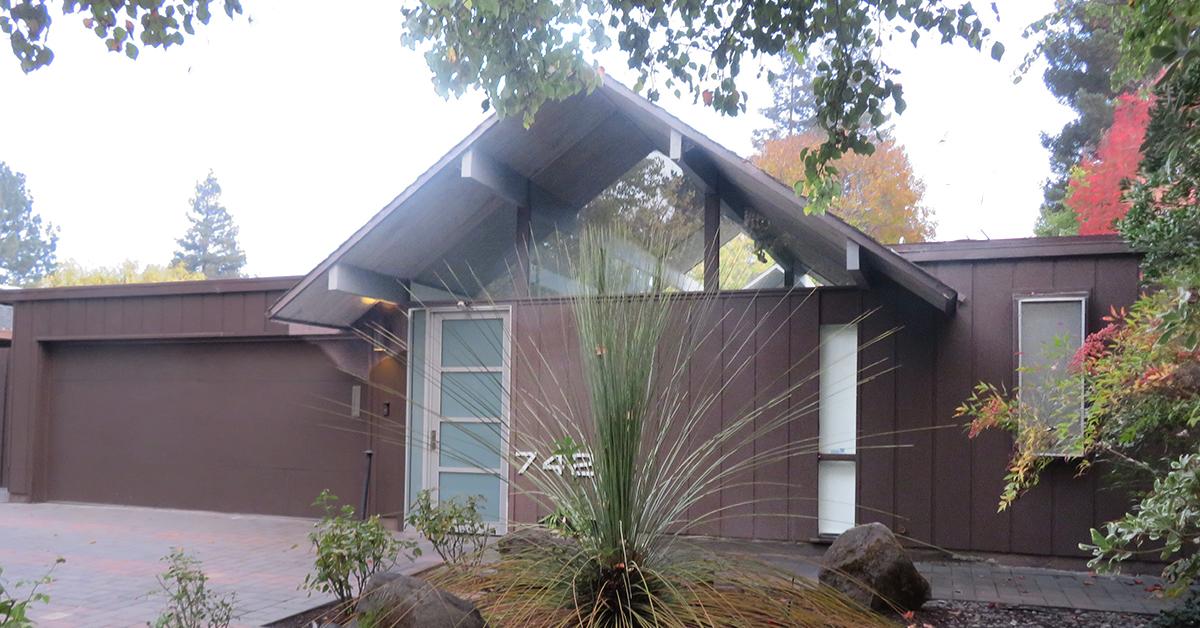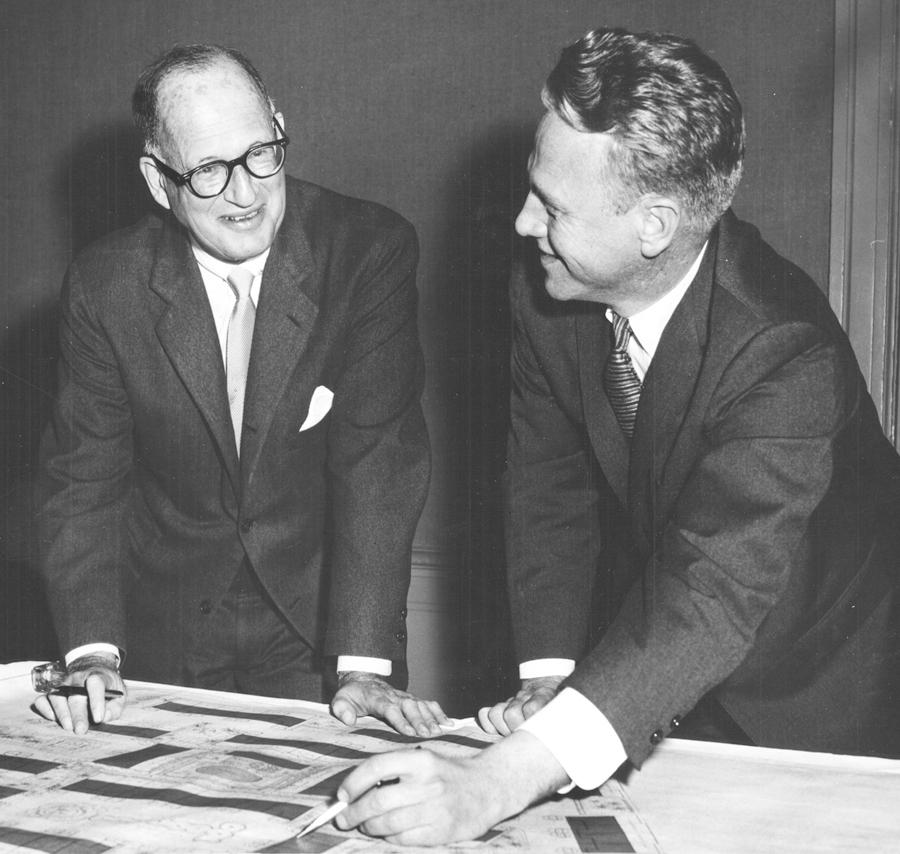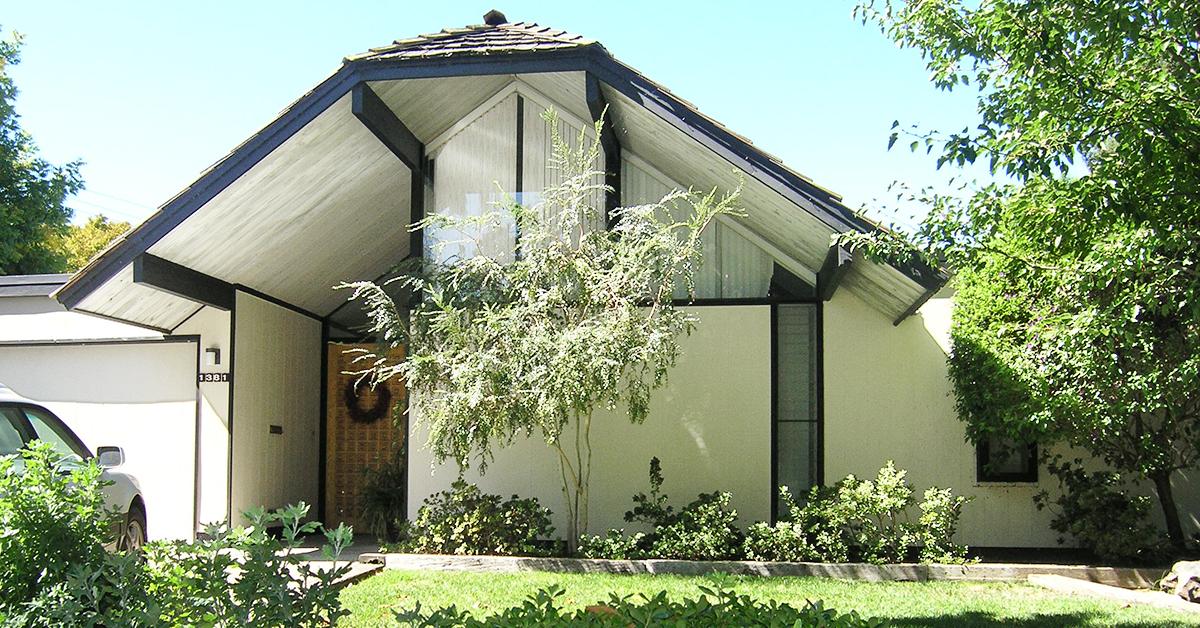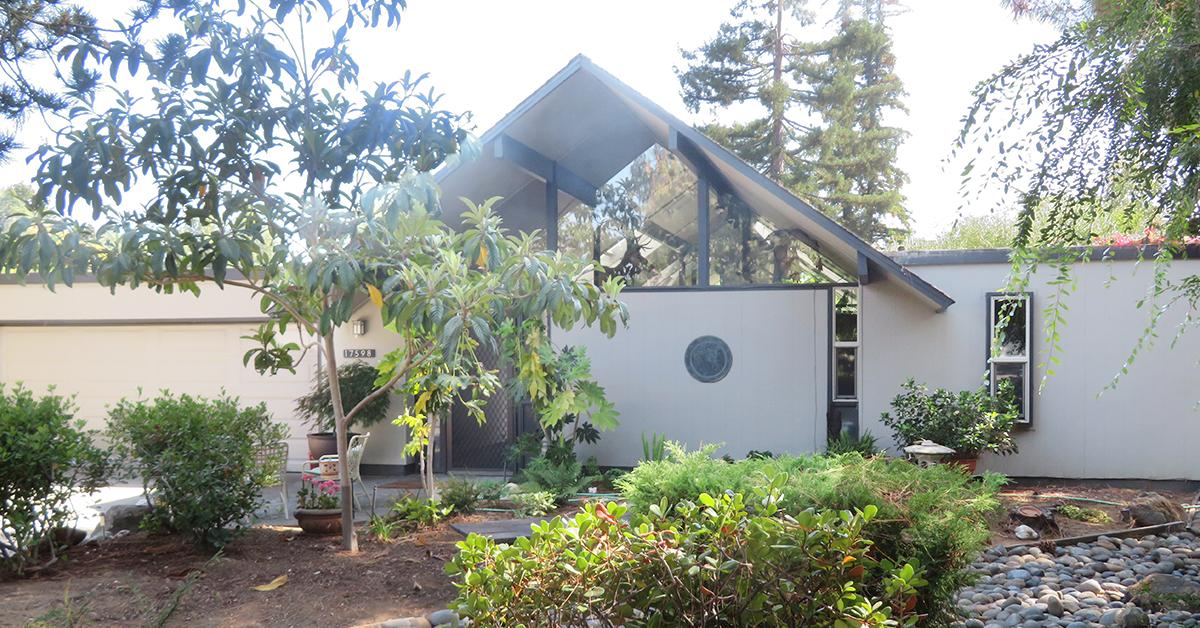
Timeline 5: Joe Returns with Fine Designs
 |
Eichler Homes was no more. Investors had lost all. Contractors were not paid. Ned Eichler, Joe’s son, remembered talking to a roofing contractor who had lost big. “He was telling me what a wonderful guy my father was.”
Ned went on: “I don’t think it ever registered on him that this was something my father had done to him.”
Joe himself recovered after the bankruptcy, and after a short period in the hospital a San Francisco Chronicle reporter found him in good spirits in 1966 and ready to bounce back.
Joe would only build homes for another eight years, and he faced further financial challenges, but during that time he built some of his more charming neighborhoods.
This is the fifth and final Eichler Historical Timeline. Read parts one, two, three and four.
 |
1966. Joe Eichler returns to business as Joseph L. Eichler Associates. The firm also does business as Nonpareil Homes and ALSCO. This is a much smaller operation than Eichler Homes. Crews are now contractors; before, they had been employees of Eichler Homes. Working with Jones & Emmons and Claude Oakland, Eichler continues to develop innovative home plans.
1966. Eichler contemplates writing his memoirs. Speaking to San Francisco Chronicle reporter Ivan Sharpe about returning to home building after the bankruptcy, Joe muses, “I have been giving some thought to doing some lecturing, maybe even writing. Would anyone be interested in a book of my life, do you think?”
1966- 1974. Among Eichler’s late homes are some of his most beautiful and varied. Eichlers had been steadily growing in size over the years, and these are among the largest models. It is in their floor plans that these late homes really suggest how innovative both Eichler and Oakland are trying to be, with atriums. ‘galleries,’ ‘loggias,’ ‘entry courtyards,’ and rear ‘courtyards.’ Facades with tall clerestory glass or medieval-inspired clipped gables are far from the Plain Jane look of the AA-1
 |
1970. Jones and Emmons design their final projects for Eichler, one or more models at the Primewood tract in Sunnyvale and a “special residence” (custom home) for Mr. and Mrs. Targ. From the mid-1960s on, Jones & Emmons do less tract work for Eichler, but design several dozen “special residences.”
Late 1960s to 1974. Joe Eichler himself greets people at his sales offices in model homes, handling many of the sales himself. Jim Dougherty, who worked in sales and more for Eichler from 1959 to 1966, remembers the last time he saw Joe.
“It was Sunday morning and I was driving up San Antonio Road in Los Altos. There were four homes and I stopped to see them. Mrs. Eichler was sitting in the car, and Mr. Eichler was in one of the model homes as the sole salesman.
“I had two thoughts: 1. Here was the most successful home builder in California, and he was now selling a few homes out of a garage and it was so sad; 2. Here was a successful man doing the thing that gave him joy and satisfaction.
“I don’t know which one was true.”
 |
1972. Joseph L Eichler Associates is sold to Klingbeil Co. Eichler sells all or a majority stake in his homebuilding company to a medium-sized company based in Ohio that primarily builds apartments. Ned Eichler, who was Bay Area regional manager for Klingbeil, most likely brings the two together. Klingbeil crews build some of the last Eichler developments. But Eichler continues overseeing the homes. Architect Oakland and Imada’s contracts are with Eichler, not Klingbeil.
1974. One of Eichler’s last subdivisions proves to be a hard sell. Some businesses get easier as you do them, but not home building. Throughout his career, economic factors, financing, changing tastes, and other factors conspire to do in or shrink some of Eichler’s tracts and other proposed developments. High interest rates – up to 11 percent – make it tough for homebuyers at Los Arboles Addition in Palo Alto, and sales are slow. Joe dies before seeing construction completed, and some homes remain unsold till 1976.
July 25, 1974. Joe Eichler dies of “heart troubles,” according to his obituary. “It was very sudden,” architect Kinji Imada remembers. Some of his tracts are still underway, including Los Arboles Addition in Palo Alto. Klingbeil completes construction in 1975. Another of Eichler’s last homes, a custom home on Guinda Street in Palo Alto, is completed in 1975. Some have called it Eichler’s last home.
- ‹ previous
- 589 of 677
- next ›



